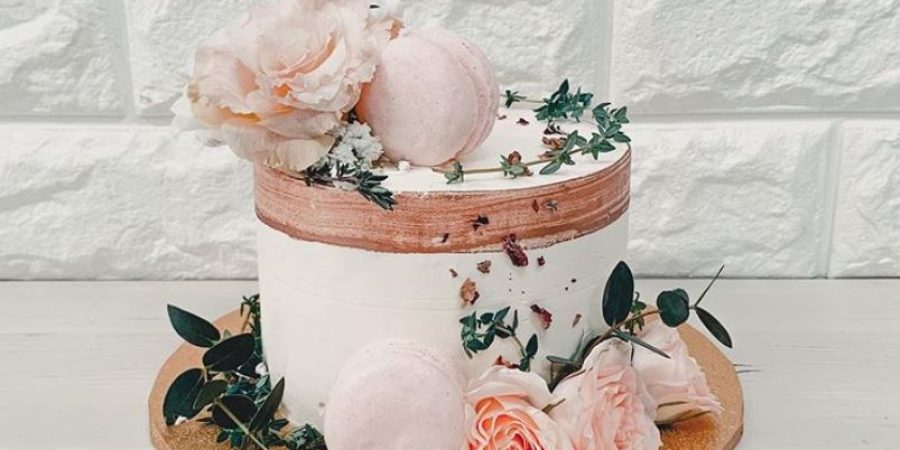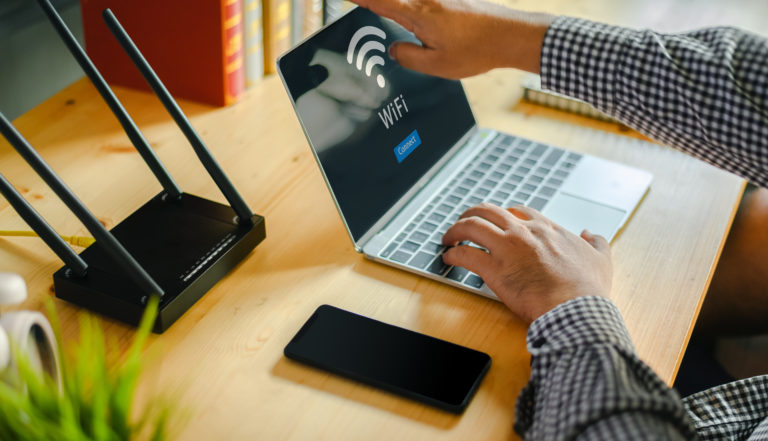6 Simple Steps On How To Start A Home Bakery Business In Singapore
Are you thinking of starting your own home bakery to earn extra cash? Or maybe you’re looking to pursue this as your full-time career? Before you take the plunge into the land of milk, honey, and oven-baked goods, make sure you’re well prepared for the journey that lies ahead. We’ve written this comprehensive guide to walk you through the process of starting your very own bakery from home in Singapore.
#1. Perfect your product

When you’re running a home-based bakery, the proof is, quite literally, in the pudding. Everything starts from the quality of the product that your customers are going to be eating. If your baked goods don’t taste delicious, you’re going to have a very difficult time growing your business. This seems like one of those “duh” facts, yet many home bakers still start their businesses without first perfecting their product. Without exceptional products to market to their customers, it’s no surprise then that home bakers producing average quality products start struggling very quickly, with many eventually going out of business.
Whatever you’re selling – be it cakes, cookies, kuehs, bread, or other desserts – they have got to have a “wow” factor that pulls people back to you, over and over again. If you want to build a truly sizeable customer base, then it’s not enough for your baked products to be merely “good”. There are so many other bakers competing for a limited set of mouths to feed – if you want to stand out, your products have got to taste exceptional!
Your baked goods don’t necessary need to use outlandish ingredients, or have really unique recipes that no one else is using. They just need to taste really, really good. If you can make the best chocolate chip cookies in Singapore, people will come to you. Likewise if you sell the best nyonya kuehs. Practice your craft over and over again until you can produce something that you know would really wow anyone who tastes your food.
Another point that home bakers tend to overlook is the capacity to produce at scale. Now, we’re not talking the scale of a traditional baker or a central kitchen, but many first-time home bakers can become overwhelmed when orders start pouring in. Baking a few artisanal cakes a couple times a week is something most cooking enthusiasts can easily handle. However, if your business starts taking off, you’re going to need the skill and operational discipline to produce much higher quantities of food, often under tighter time constraints.
#2. Purchase a comprehensive set of high-quality equipment
If you want to produce consistently good products, you’ve got to have reliable and well-made equipment. You don’t need to splurge on anything expensive, but you do need to make some level of investment into the tools of the trade. Here’s a list of home baking equipment you’ll need to successfully produce delicious treats:
a. Oven: A good oven that can reach temperatures of at least 200C (390F). You can get a standing oven like this one below from Mayer, for only $88:

These ovens are a fantastic way to get started on home baking. They’re affordable, and they don’t require expensive renovations to install (just plug it in and start baking!). If you’re just getting started in selling baked goods from home, then one of these standing ovens is highly recommended. You can always upgrade to a more expensive oven later on once your business starts ramping up. However, do note that some lower-cost models of standing ovens don’t have strong insulation, so even if the specifications say it can reach a certain temperature, the actual temperature is usually lower. This can sometimes result in uneven baking, so make sure you choose your specific oven wisely.
The next step up would be a built-in oven. Gain City has a broad range of affordable ovens, with one of the lowest priced being this model from Otimmo for $599:
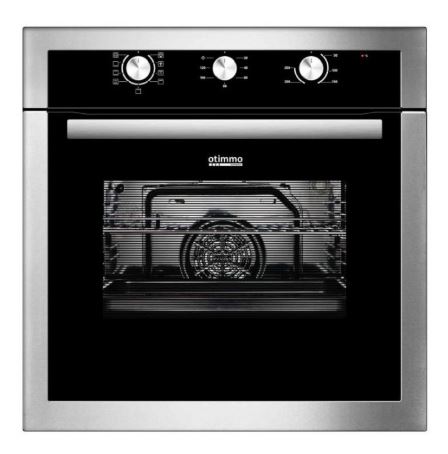
Do note that if you don’t already have a built-in oven, you’ll have to factor in renovation costs to carve out a space for the oven. However, it’s a worthy investment in the long run if you’re serious about home baking. Built-in ovens have a much larger capacity than standing ovens (this one from Otimmo is 70 litres, which is double that of the Mayer’s 30 litres). Built-in ovens also tend to have higher maximum temperature settings so you can bake a wider variety of goods, and better insulation so you can produce more consistent results. Take the cost of the oven as a one-time investment that will pay itself off through the many happy customers you’ll end up winning over.
If you’re really advanced in your journey to churn out home baked goodies, you can consider getting a premium built-in oven, like this one from Bosch ($3,919 when on sale, U.P. $5,248):
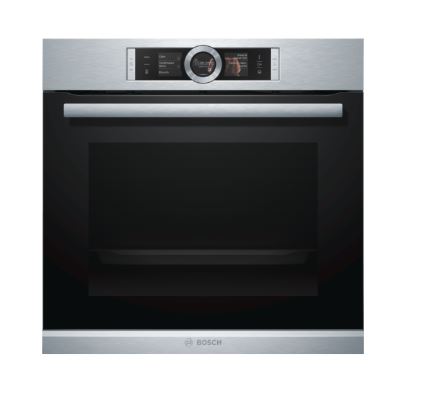
This top-end model from Bosch comes with a built-in steamer, which any serious home baker will know is a great luxury feature to have combined in an oven. The steamer function is perfect for making things like sponge cakes, custards, and puddings – essentially any baked good that requires gentle cooking. When you’re done baking for the day, you can also use the steamer to gently cook fish, meats, and vegetables – perfect for oil-free healthy eating!
b. Stand mixers: You can get an affordable stand mixer like this one from Iona ($59):
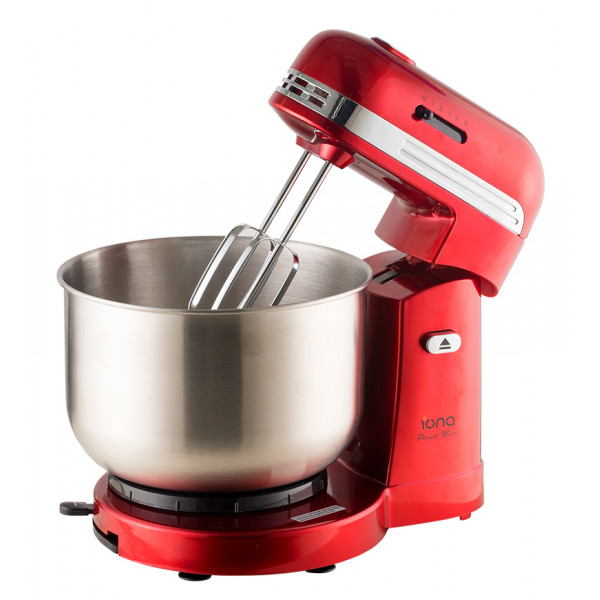
If you’ve got the cash, you can join the baking in-crowd and get yourself the mixer that’s known the world over – the Kitchen Aid stand mixer ($649, U.P. $999):

c. Baking utensils: Nothing fancy here. You don’t need expensive brands like WMF – any brand will do. Just make sure you have the following common tools:
– Weighing machine
– Spatula
– Whisk
– Serrated bread knife (if you’re baking bread). A regular knife can work but it’s a lot less effective than a serrated edge.
– Baking trays
– Silicon baking mat
– Rolling pin
– Measuring cups and spoons
– Sieve
#3. Do market research on competing home bakers

This is a step that first-time home bakers tend to ignore. Do you know how much you should be selling your baked goods for? It’s not enough to simply add up your ingredient and delivery costs, then slap a 10-20% margin on top of that. Consumers in Singapore tend to be price-sensitive, and if your prices don’t represent good value, then you’ll have a hard time winning first-time customers, let alone repeat business.
Search social media channels to find home bakers who sell products that are similar to yours. If you’re selling traditional Malay kuehs, find other bakers selling kuehs. If prices aren’t advertised, contact the seller. Compile the prices from a variety of competitors, and then compare them to yours. If your prices are higher than average, then your product needs to correspondingly be better than average. Know where you stand in the market.
It’s useful to learn from some of the most popular home bakers in Singapore – both those selling similar baked goods to you, and those baking other types of products. What are they baking? How do they present their products? What makes their products so popular? You should also seriously consider ordering from well-known home bakers so that you can try their products. Is it really delicious? If it is, you now have a reference point that you can learn from, and you can aim to reach their standard (if you’re not already there yet).
Performing regular research on other bakers will improve your own business in the long run. The baked goods industry is a hugely competitive marketplace, with thousands of other sellers competing for a limited set of hungry mouths. Don’t just focus on yourself – make sure you know what the marketplace is offering, so you can then differentiate yourself from the competition.
#4. Ensure compliance with Singapore’s home baking regulations

Because you’re selling food, you need to ensure that your hygiene practices are in good order. If you don’t maintain a clean work space and safe food handling procedures, your customers could end up contracting food poisoning after eating your products. This could create some serious legal liability issues for you.
If you live in an HDB flat, there is a government initiative called the Home-Based Business Scheme (HBBS), which allows you to run a home-based bakery without having to apply for a food license. This makes it much easier for you to just set up your home bakery, and begin selling your goods to customers. Many people have utilised this scheme to set up small home bakery businesses, earning themselves some good extra income on the side.
There are several key points on the HBBS that home bakers should take note of:
- You can’t buy paid advertisements for your business. This is a very important point! This means no buying of Google, Instagram, or Youtube ads. You’ll have to rely entirely on social media to market your baked goods.
- You can’t register your HDB flat as your address. Try using an online incorporation service like Osome, which can provide you with a business address.
- You can’t sell your baked goods at food stalls/stations/fairs, or other food establishments. This means you can’t supply your home-baked goods to eateries.
- You can’t load or unload your baked goods onto/from trucks. This means you won’t be able to produce baked goods in large volumes.
- You can’t employ people outside of your household. This means if you need baking assistants, they have to be family members living with you in your flat.
The above regulations don’t apply if you live in private housing.
#5. Market your baked goods on social media
Because you can’t buy paid advertisements, social media is going to be your primary mode of marketing. Platforms like Instagram, Facebook, and Pinterest are extremely powerful tools for consumers to get to know your brand and your products. Unlike other businesses, you don’t have to spend money on paid ads to get the word about your business.
Because so much social media marketing is visual, it’s also really important to ensure that your products not only taste delicious, but look beautiful as well. How many times have you come across a beautiful looking cake or dessert on Instagram, and then spent the next few minutes scrolling through their picture feed and even visiting their website to learn more about the baker behind the pictures? That kind of customer engagement is an extremely powerful marketing force. Therefore, it’s crucial that you invest the effort into ensuring that your baked goods are as Instagram-worthy as possible. Doing will definitely pay you dividends in it the long run, as you watch the numbers of your followers rapidly bloom, a good percentage of whom will likely turn into actual customers.
Take a look at these beautiful creations, all made by home bakers in Singapore:



Don’t all these baked goods look lip-smackingly delicious? That’s the power of visual marketing.
For effective social media marketing, consider reaching out to food bloggers, and people with large social media followings. You can consider sending them free samples or offering them discounts, for a public review of your products. If you’re just starting out, you might not be able to get the attention of more well-known food critics/bloggers. In such a scenario, you can always start with “micro influencers”, e.g. people with Instagram followers in the 2,000 to 3,000 range (or lower). You can reach out to multiple such individuals and begin a guerilla marketing campaign from there. As your business grows, you can then consider moving on to people with larger and larger followings.
#6. Protect your home baking business against food poisoning liability
If you want to start a home baking business, make sure you have public liability insurance with food poisoning extension to protect your business from liability if your customers fall sick after eating your food.
Provide is the best place to get home bakers insurance. Our digital model creates lower overheads, so we pass every dollar saved back to you. Save up to 25% on your premiums now!
